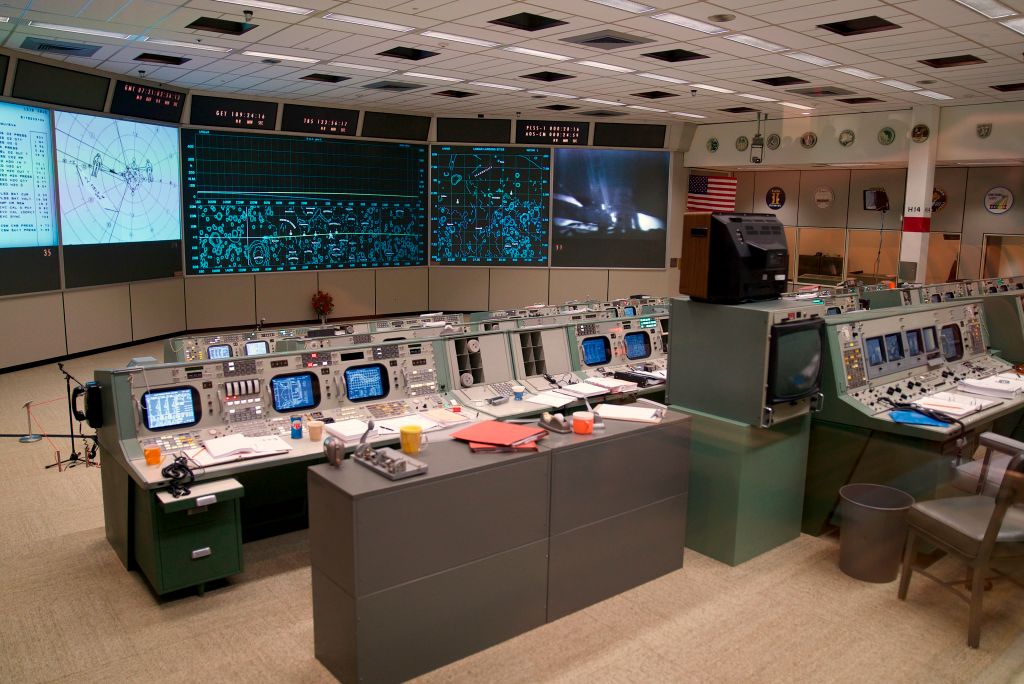
Almost exactly 50 years after the United States managed to land a team of men on the moon, NASA is reopening the historic mission control room that made it all possible. After a painstaking reconstruction, visitors can go back in time to see the Apollo 11 mission control center just as it appeared in 1969.
The exhibition at NASA’s Johnson Space Center is blasting off a summer of major celebrations marking the half centenary of the moon landing. After three years and a $5 million investment, the entire mission control room at the Houston facility has been refurbished and restored to look exactly as it did on that historic day (and many others, too: the mission control center managed most Gemini and Apollo flights). The ribbon-cutting took place last Friday, just a few short weeks before the 50th anniversary of Apollo 11 on July 20. Guided tours for the public began on July 1.
Though the control center, which was given landmark status in 1985, is in the middle of NASA’s otherwise fully operational building, the site was closed in 1992 when its mission control team moved to a more modernized part of the facility. Over the years that followed, staff and visitors would stop by, sometimes taking a souvenir with them—say, a button or a switch. Eventually, the place was in ruins.
An audience views the recreation of the moon landing inside the newly restored Apollo Mission Control Room. Photo by Kacey Cherry / AFP /Getty Images.
After the financing was secured for the project, NASA meticulously researched old photographs of the control room in its original state. Today, the room looks almost identical to those images: there are ashtrays and coffee cups, old staplers and stopwatches, pens and pencils, and metal headsets and rotary phones. There is even an open can of RC Cola.
“It was a herculean effort by the team to really pull off what we pulled off in that room today,” Jennifer Keys, the project manager of the restoration team, told the New York Times. “We tracked things down on eBay, from people’s donations— whatever we could scrounge up. We did a scavenger hunt across Johnson Space Center to find things like trash cans, chairs, and binders.”
They also interviewed 25 flight controllers to hear about the more nuanced characteristics of the room, like which buttons lit up, which ones didn’t, and those they used most. With regards to the surrounding architecture in the room, they managed to find an old roll of wallpaper behind a fire extinguisher that could be reused, and fallen ceiling tiles were re-appropriated from the lobby phone booth elsewhere in the building.
“For me, as the historic preservation officer and just as an American, this is one of the most important and historic places on Earth,” Sandra Tetley, historic preservation officer at the Johnson Space Center, said during the opening, likening the space to the Independence Hall where the Declaration of Independence was signed. “We landed two men on another celestial object, the Moon, and brought them safely home again. For us to be able to do that in this room, that’s significant.”
Photo by Kacey Cherry / AFP /Getty Images.
Photo by Kacey Cherry / AFP /Getty Images.
Photo by Kacey Cherry / AFP / Getty Images.